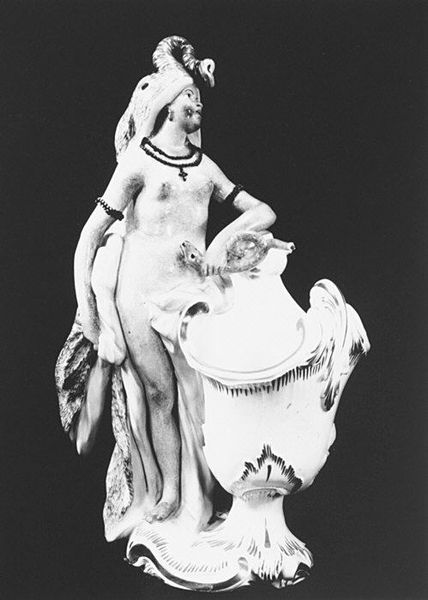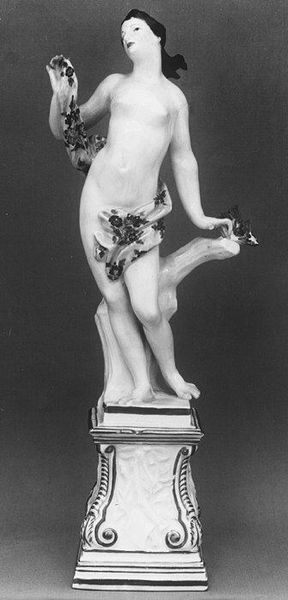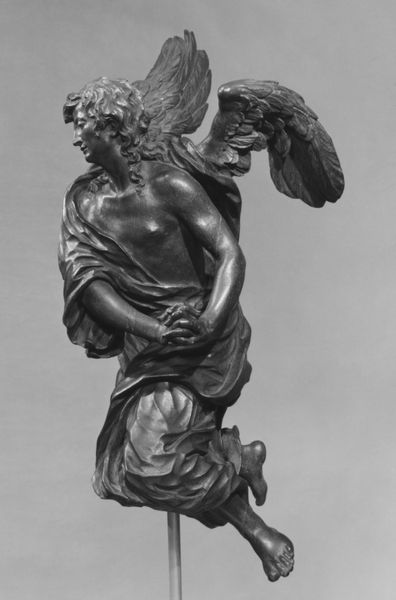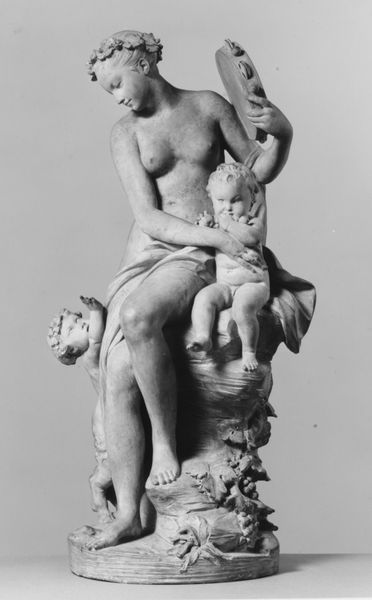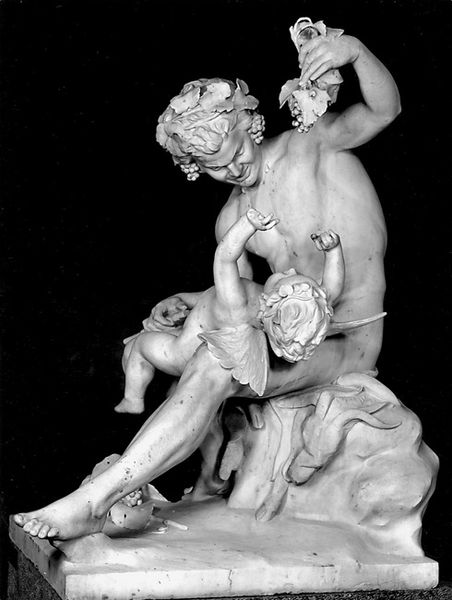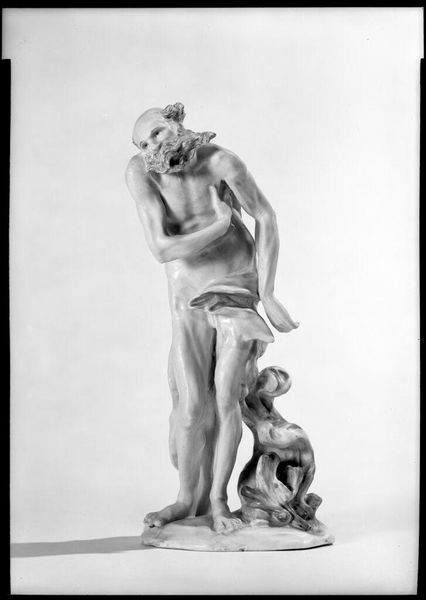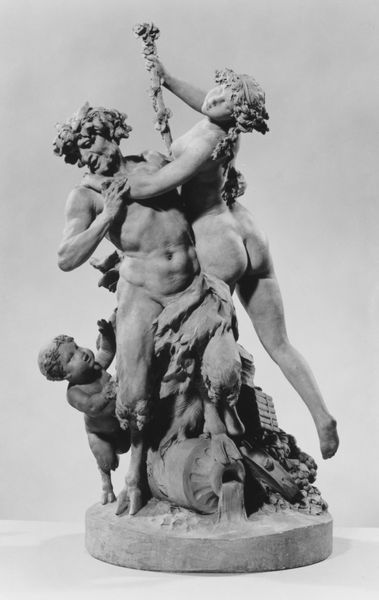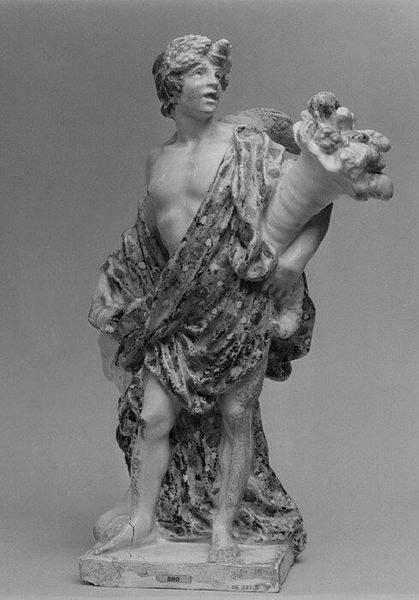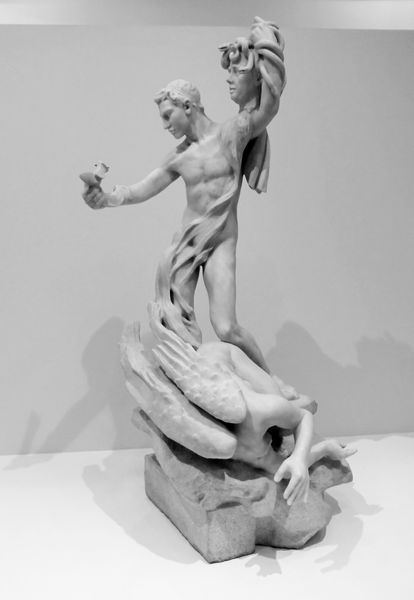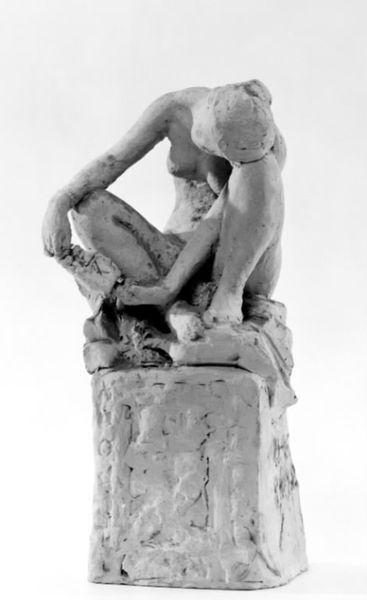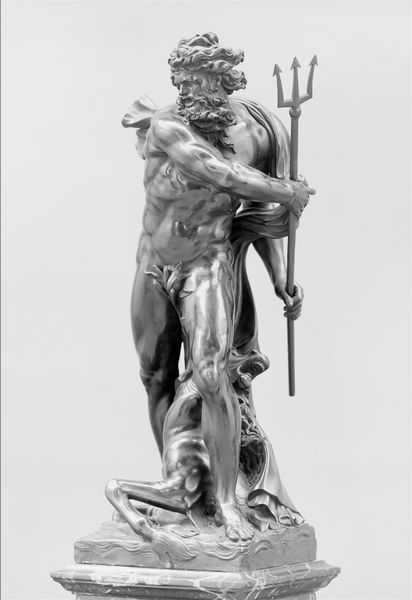
ceramic, porcelain, sculpture
#
animal
#
sculpture
#
ceramic
#
porcelain
#
frontview face
#
sculptural image
#
unrealistic statue
#
sculpting
#
black colour
#
sculpture
#
black and white
#
repetition of black colour
#
decorative-art
#
computer
#
statue
Dimensions: Height: 7 9/16 in. (19.2 cm)
Copyright: Public Domain
Curator: This porcelain sculpture, created by the Nymphenburg Porcelain Manufactory between 1763 and 1767, is entitled "Europe (part of a set)". It’s currently housed here at the Metropolitan Museum of Art. Editor: Wow, there’s a whole story compacted in there. A powerful, semi-nude male figure is sitting astride what looks like a rather agitated horse… like he’s either just barely contained it, or is getting ready for something dramatic. Is he pulling a curtain back, maybe about to deliver some crucial lines on a grand stage? Curator: The “grand stage” element resonates with the time and purpose of the piece. These sculptures, of which “Europe” is just one, represented continents. They served as decorative objects for the European aristocratic class during the height of colonial expansion, signifying a sort of dominion over the world, translated through allegorical form. Editor: Ah, there's the less romantic subtext… that posture does suggest power and command. Yet there’s also a sort of fragility conveyed by the porcelain itself. How do you display dominion in something so easily shattered? It's kind of funny, don't you think? Like, ‘we rule, but gently, because everything breaks’. Curator: I find that apparent contradiction entirely apt. Porcelain itself, at this time, represented both wealth and a technological prowess acquired from Asia. So the very material embodied that complicated web of aspiration, achievement, and appropriation at the heart of European expansionism. And as these pieces migrated into museum collections, we can chart shifts in historical understanding and the ethics of representation. Editor: The horse, by the way, really *does* look annoyed! Like it’s questioning the whole project. What do you suppose this “Europe” thought about standing in someone’s palace, silently symbolizing colonial power, whilst just trying to strike the right pose? Curator: I'd guess the artisans at Nymphenburg were simply working within a given framework, reflecting prevalent ideals, of beauty, control, and power. Viewing these figures today allows us to unpack these embedded values critically, examining both their artistry and their socio-political context. Editor: Maybe true beauty lies in questioning those old frameworks. And in letting a porcelain horse express a little dignified dissent, now frozen in art. It gives me hope!
Comments
No comments
Be the first to comment and join the conversation on the ultimate creative platform.

